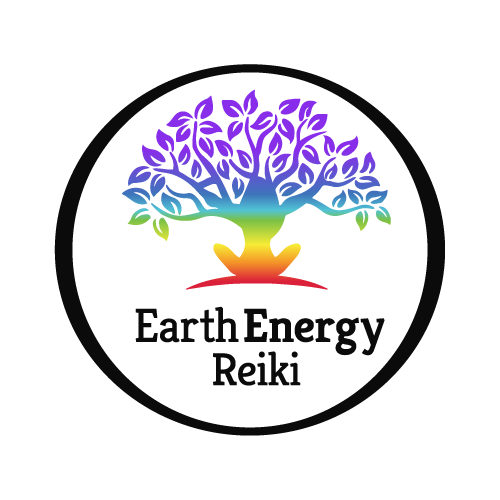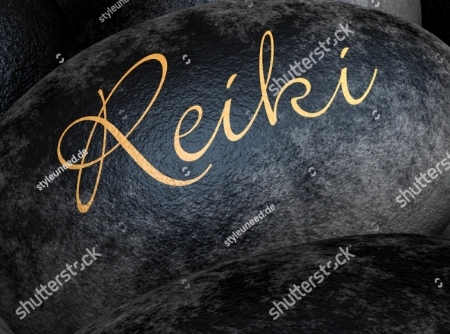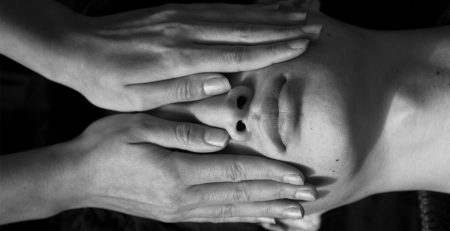All About Reiki: How This Type of Energy Healing Works, and Its Health Benefits
Reiki is a form of energy healing that originated in Japan in the early 20th century. (1) According to the International Center for Reiki Training, the practice is based on the idea that we all have an unseen “life force energy” flowing through our bodies. (2) A Reiki practitioner gently moves her hands just above or on the client’s clothed body, helping reduce stress and promote healing by encouraging a healthy flow of energy.
According to a 2007 survey conducted by the National Institutes of Health, 1.2 million adults and 161,000 children in the United States received energy healing therapy like Reiki in the previous year, and Reiki is now used by a growing number of Americans to help with relaxation, anxiety, pain management, and depression, according to a study in the March–April 2017 issue of Holistic Nursing Practice. (3,4)
Here’s more on the benefits of Reiki, its history, and how to get started.
Common Questions & Answers
Reiki is an energy healing technique that involves a Reiki master using gentle hand movements to guide the flow of healthy energy (what’s known in Reiki as “life force energy”) through the body to reduce stress and promote healing. Reiki is a form of complementary medicine; there’s evidence it can reduce daily stress and help with management of some chronic diseases.
Reiki is linked to a range of physical and emotional health benefits, including better sleep, improved mood, and pain relief. Research suggests Reiki helps your body return to a state of relaxation, which allows it to heal from damage brought on by stress, injury, or disease. There’s evidence that Reiki, used as a complementary therapy with other standard medical techniques, can help people recover after surgery and manage symptoms of cancer and AIDS.
There is little scientific evidence that explains exactly how reiki works, but studies have found that Reiki can have measurable benefits when it comes to lowering blood pressure, improving sleep, lessening anxiety, and reducing pain. (Some of those studies have been done in specific groups, like people recovering from surgery, and others have been done in healthy individuals.) Keep in mind, however, that Reiki is a complementary therapy intended to be used alongside standard medical treatments — not in place of them.
During a session, a Reiki practitioner will gently move their hands above or close to the body in a series of positions. Each hand position focuses on a different part of the body — including the head, shoulders, stomach, and feet — and is held for roughly 3 to 10 minutes, depending on the person’s needs. There is very little to no talking during sessions, which typically last between 60 and 90 minutes.
What Is Reiki and How Does the Energy Therapy Work?
Reiki therapy is a way of guiding energy throughout the body to promote the recipient’s self-healing abilities, according to the National Center for Complementary and Integrative Health (NCCIH). (5) The Reiki practitioner doesn’t cause the healing, nor are they the source of that healing energy; they’re a channel for the energy — similar to the way a garden hose acts as a channel for water, according to a review published in December 2014 in the journal Pain Management Nursing. (6)
“I’m an open channel, and [the Reiki recipient’s] body takes that energy and does whatever it needs with it,” explains Vickie Bodner, a licensed massage therapist and Reiki master at the center for integrative medicine at Cleveland Clinic in Ohio.
The word “Reiki” is a combination of two Japanese words: “rei,” which means “God’s wisdom,” or “the higher power,” and “ki,” which means “life force energy.” (2)
“Ki is the life force energy that animates all living things,” says Joan Maute, a licensed Reiki master teacher who practices in Waikoloa, Hawaii, and Charlottesville, Virginia. Put together, “rei” and “ki” mean “spiritually guided life force energy.” (2)
Reiki is taught according to the Japanese tradition of the “sensei” (teacher) who passes the knowledge to the student through attunement, an initiation ceremony that is thought to open the student’s energy channels to facilitate the flow of healing energy, according to an article in the Journal of the Advanced Practitioner in Oncology. (7) Once open, these channels remain open for the rest of your life. (8)
Reiki is taught at three levels: first-level practitioners can practice on themselves or others through light touch; second-degree practitioners can practice distance healing; and third-degree or master level practitioners can teach and initiate others into Reiki. (6)
So, how does Reiki practice work? “The honest answer to that is: We don’t know,” Miles says. “Science does not yet know the mechanism of action.”
There are theories.
One popular theory involves a phenomenon known as the “biofield.” The biofield is an electromagnetic field that permeates and surrounds every living being. In humans, this field extends 15 feet or more from the body, according to Ann L. Baldwin, PhD, a Reiki researcher and professor of physiology at the University of Arizona’s College of Medicine.
The heart, for example, produces an electrical field — measured through an electrocardiogram, or ECG — to regulate heartbeats. The brain also produces an electrical field, though at a lower level than the heart. In fact, every cell in the body produces an electrical charge through positive and negative charges, which then create magnetic fields. (6)
According to this theory, the interaction between two human magnetic fields may explain the effects of touch therapies like Reiki. (6) It is thought that the biofield is the force that guides bodily functions, and that Reiki energy influences the biofield. “[The biofield] is thought to cause dynamic changes in its vibrational qualities that alter physiological and psychological functions in living beings,” Baldwin says.
Quantum physics — the study of how small particles like electrons (particles with a negative electric charge) and photons (particles of light) behave in an attempt to explain the interactions of energy and physical matter — may also help explain how Reiki practice works. (6) Physicists have found that these tiny particles of energy can be in more than one place at one time, and that thought or intention may change how the particles work. (6) In other words, the Reiki practitioner may be able to gather and direct biofield energy to the recipient through thoughts and intentions. (6)
On its website, the NCCIH notes that there is insufficient scientific evidence to support the existence of this energy field. (5)
What Are the Benefits of Reiki?
Reiki practice may help with a variety of physical and emotional problems, including insomnia, stress, depression, anxiety, and pain.
For example, research suggests that Reiki may lower anxiety, stress, and pain in people undergoing surgery. (4) In a study published in 2017 of patients undergoing knee replacement surgery, researchers separated 46 patients into three groups: One group received three or four 30-minute Reiki treatments throughout their hospital stay; a second group received the same number of placebo (sham) Reiki sessions; and a third group received neither Reiki nor sham Reiki. Every group also received standard medical care. Researchers found that only those who received Reiki saw significant reductions in pain, blood pressure, breathing rate, and anxiety pre- and post-surgery. (4)
Reiki may also improve mood and sleep: A study published in Evidence-Based Complementary and Alternative Medicine found that college students who received six 30-minute Reiki sessions reported greater improvements in stress, depression, anxiety, and sleep. (10)
Other research suggests that Reiki and other forms of energy therapy may help patients with cancer improve pain control and anxiety levels. (11)
A main benefit of Reiki (that leads to a lot of other benefits) is reducing stress, Miles explains. “Our bodies cannot heal when they’re in a stressed state all the time.”
Reiki gives your body a break from the stresses of daily life, helping your body return to a state of relaxation. Once in this state, your body is able to heal any damage brought on by stress, injury, or disease: “By helping a person experience deep relaxation, Reiki enhances and accelerates our own natural healing process, because the body can stop being stressed and focus on healing itself,” Maute says.
For example, research shows that a single Reiki session may help your autonomic nervous system, the primitive part of your nervous system that you don’t need to consciously control (it’s responsible for things like heartbeat and breathing), move from a sympathetic-dominant, or “fight-or-flight” state, to a parasympathetic-dominant, or “rest-and-digest” state, Miles explains. (12)
Your brain is constantly processing information in a region called the hypothalamus, which then sends signals through your autonomic nervous system to the rest of your body to either stimulate or relax different functions, such as heart rate, blood pressure, breathing, and digestion, according to Harvard Health. (13)
When you experience stressors like poor sleep, a confrontation with a friend, or even exercise, your sympathetic nervous system reacts, releasing the hormone epinephrine and increasing heart rate and blood pressure (the fight-or-flight response that gets the body ready to deal with potential dangers). (14) But when your body is constantly under stress, this response can shift into overdrive, which can lead to problems like greater risk of heart disease, research has found. (15)
“The parasympathetic-dominant state is the state we are meant to live in,” Miles says. And Reiki helps keep your autonomic nervous system in that state.
In a study published in Biological Research for Nursing, 21 healthcare professionals with burnout (a work-related mental health condition characterized by mental exhaustion, emotional detachment, and a lowered sense of personal accomplishment) received a 30-minute Reiki session with an experienced therapist, as well as a 30-minute placebo treatment with an inexperienced therapist who mimicked the Reiki treatment. The two treatments were separated by one week; participants were randomly assigned their treatment order, and they weren’t told which treatment they were getting during which session. (16)
Researchers measured heart rate variability, or the measure of the variation in time between each heartbeat, to gauge how the nervous system responded to the therapy.
A low score indicates there’s little variability between heartbeats, signaling that the sympathetic, or fight-or-flight, component of your nervous system may be working overtime, and your stress level is high. Meanwhile, a high score means greater variability in between your heartbeats, and that the parasympathetic, or rest-and-digest, component of your nervous system has kicked into higher gear. (13)
Researchers found that heart rate variability was greater following the Reiki session, which suggests (using a very quantifiable physiological measurement) that Reiki may help a stressed nervous system relax. (16)
Keep in mind that Reiki is a form of complementary therapy, which means it works alongside — not in place of — other medical and therapeutic techniques. “Because Reiki is so balancing to the system overall, it can potentially benefit any situation,” Miles says — but should not be used as a substitute for other treatments your healthcare providers have prescribed.







Leave a Reply